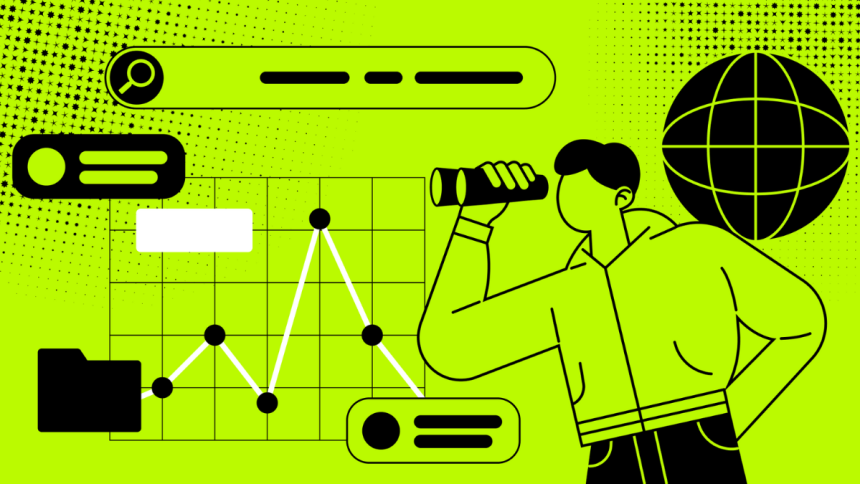In today’s digital landscape, the demand for accurate and context-aware responses has become paramount. As of 2023, chatbots are projected to handle between 75% and 90% of customer inquiries in sectors like healthcare and banking, underscoring their growing role in customer service. However, traditional chatbots often rely on predefined scripts and limited datasets, which can lead to generic or irrelevant responses, failing to meet the nuanced needs of users.
Enter Retrieval-Augmented Generation (RAG) chatbots—a sophisticated evolution in conversational AI. By combining generative models with real-time data retrieval, RAG chatbots deliver more accurate and contextually relevant responses. This hybrid approach not only enhances user satisfaction but also addresses the limitations of traditional chatbots, paving the way for more intelligent and responsive interactions. As businesses increasingly adopt AI technologies, the shift towards RAG systems signifies a commitment to improving the quality and reliability of automated customer interactions.
How Traditional Chatbots Work: Strengths and Limitations
Traditional chatbots are typically built on two main models: rule-based systems and generative models. Each approach has strengths and limitations, which affect how well the chatbot can perform in different situations.
Rule-Based and Generative Models in Standard Chatbots
Rule-based chatbots rely on predefined responses and a set of rules that govern how they interact with users. These chatbots follow a structured script that triggers specific answers based on the user’s input. The rules are often designed to match user queries with appropriate responses using keywords or phrases. Because of this rigid structure, rule-based chatbots are effective in handling simple, repetitive tasks where the user queries follow a predictable pattern, such as answering frequently asked questions or providing support for basic inquiries.
Generative models, on the other hand, allow for more flexibility by generating responses based on patterns in the training data. These models can understand and generate new sentences, making them more capable of handling a wider range of queries compared to rule-based systems. However, the quality of responses depends heavily on the quality and size of the training data. While generative models can offer more dynamic interactions, they still face challenges in understanding complex or highly specific requests.
Common Challenges: Predefined Responses, Hallucinations, and Lack of Adaptability
One of the primary limitations of rule-based chatbots is their reliance on predefined responses. While they excel in situations where queries are straightforward and follow a clear path, they struggle when faced with unexpected questions or queries that don’t fit within their predefined set of rules. This lack of flexibility can lead to frustrating user experiences when the chatbot fails to provide relevant answers.
Generative models, while more versatile, are not immune to issues either. One challenge is hallucinations, where the chatbot generates responses that are factually incorrect or nonsensical. This typically happens when the model has insufficient data or when it struggles to understand the context of the query. Additionally, both rule-based and generative models often lack adaptability. They are not equipped to learn from interactions in real time, which limits their ability to improve and adapt to new topics or changes in user behavior without retraining.
Use Cases Where Traditional Chatbots Perform Well
Despite their limitations, traditional chatbots excel in certain use cases, particularly where the queries are simple, repetitive, and well-defined. For instance, rule-based chatbots are highly effective in customer service scenarios, providing basic troubleshooting steps, answering frequently asked questions, and assisting with account information. They can also be used for booking appointments, managing reservations, or processing routine transactions like order status inquiries.
While still bound by their limitations, generative models can be beneficial in more open-ended scenarios where the conversation can take many directions, such as helping users explore content or products. They are also useful in environments where human-like interaction is not a critical requirement but where flexibility is needed beyond the rigid constraints of rule-based systems.
The RAG Advantage: Enhancing Chatbots with Information Retrieval
The concept of Retrieval-Augmented Generation (RAG) represents a significant advancement in the way chatbots and AI systems respond. By combining the power of information retrieval with generative models, RAG enhances the chatbot’s ability to deliver accurate and contextually relevant answers. This method involves retrieving real-time information from external databases or sources and then generating responses based on that data, enabling chatbots to offer more comprehensive and up-to-date interactions.
Explanation of Retrieval-Augmented Generation (RAG)
Retrieval-Augmented Generation (RAG) combines two core elements: information retrieval and natural language generation. Unlike traditional AI models that generate responses based solely on their pre-trained knowledge, RAG models first retrieve relevant documents or data from an external source, such as a knowledge base, before developing a response. This process enables the chatbot to leverage external information, enhancing its ability to answer questions with greater accuracy and specificity.
RAG works by using a retriever module to search through large datasets and retrieve relevant information. The generator then synthesizes these retrieved facts into a natural, coherent response. This approach not only improves the accuracy of the responses but also ensures that the chatbot’s knowledge is more dynamic and less reliant on static, pre-existing training data.
How RAG Chatbots Access and Retrieve Real-Time Information
RAG chatbots are designed to access real-time information by querying external databases, websites, or APIs. When a user submits a query, the system first identifies the most relevant data by conducting a search or retrieval operation across its data sources. These sources can range from general knowledge databases to industry-specific content or real-time data feeds, such as news articles or product catalogs.
Once the relevant data is retrieved, the chatbot’s generative model processes the information and crafts a response based on both the retrieved data and the context of the user’s question. This process enables RAG-powered chatbots to respond in a way that is not only factually correct but also contextually appropriate and personalized to the user’s needs.
Key Benefits: Accuracy, Contextual Understanding, and Up-to-Date Knowledge
- Accuracy: By retrieving specific, real-time data from external sources, RAG chatbots can provide responses that are grounded in the latest and most relevant information, minimizing the chances of errors or outdated knowledge. This results in more reliable and precise answers, particularly in fields where information evolves rapidly, such as travel, finance, or healthcare.
- Contextual Understanding: RAG chatbots improve contextual understanding by considering the full scope of retrieved information in relation to the user’s query. This allows the model to generate responses that are not only relevant but also nuanced, reflecting the context in which the question was asked. This is particularly useful for more complex queries that require an understanding of user intent and the surrounding context.
- Up-to-date Knowledge: One of the most significant advantages of RAG-powered chatbots is their ability to access and integrate real-time information. Unlike traditional chatbots, which may rely solely on pre-trained knowledge that can become outdated, RAG models can pull in fresh data as it becomes available. This ensures that the chatbot always provides users with the most current and accurate answers.
Choosing the Right Solution: When to Use RAG vs. Traditional Chatbots
As businesses continue to embrace AI technologies, choosing the right solution for customer interaction becomes increasingly important. Two popular types of AI-driven solutions are traditional chatbots and RAG (Retrieval-Augmented Generation) models. Both have their strengths and ideal use cases, but understanding when to use each can significantly improve customer engagement and operational efficiency. Here’s a breakdown of scenarios where each solution excels and how they can be applied across different industries.
1. Scenarios Where Traditional Chatbots Suffice
Traditional chatbots are designed to handle structured, predictable conversations. They excel in environments where interactions follow a set pattern and do not require complex understanding or dynamic response generation.
- FAQs: For answering frequently asked questions, traditional chatbots are an excellent solution. They can be programmed with a list of predefined answers to common questions, such as business hours, return policies, or shipping information. The responses are fixed, ensuring consistency across interactions.
- Structured Workflows: When a customer needs to follow a clear, step-by-step process, such as booking an appointment, checking order status, or submitting a service request, traditional chatbots can guide them through the required steps with minimal complexity. These workflows can be set up with decision trees and predefined responses, making them efficient and easy to use.
In these scenarios, traditional chatbots can provide fast and effective solutions without the need for advanced AI capabilities.
2. When Businesses Should Opt for RAG-Enhanced Solutions
RAG-enhanced solutions combine the power of traditional chatbots with the ability to pull relevant information from external databases or knowledge sources and generate more dynamic, context-aware responses. This makes them ideal in situations where a deeper understanding or flexibility is required.
- Complex Queries: If customers ask for information that’s not included in the chatbot’s initial training data or if the inquiry is dynamic, such as specific product details, RAG solutions excel. For example, if a customer asks for the best offers on a specific product, the RAG model can retrieve relevant promotions from real-time data and generate a detailed, personalized response.
- Personalized Customer Experience: When providing tailored recommendations, RAG models can pull data from user profiles or past interactions to craft personalized responses. This level of customization is difficult for traditional chatbots, which rely on preset responses.
- Dynamic Content Generation: RAG models are also suited for generating content based on up-to-date data, such as responding to customer questions about ongoing sales, events, or new product launches. This feature is especially useful in industries where information changes frequently.
Conclusion: Smarter AI, Smarter Businesses with COAX
As the demand for smarter, more efficient customer interactions grows, the role of information retrieval in chatbot performance becomes increasingly vital. The ability to dynamically retrieve relevant data and provide context-aware, accurate responses is crucial for delivering high-quality, personalized customer experiences. AI-powered solutions, like RAG-enhanced chatbots, enable businesses to offer more meaningful interactions that go beyond static, predefined responses.
By leveraging these AI-driven solutions, businesses can enhance user engagement, streamline operations, and provide real-time, tailored experiences that meet customer expectations. Whether it’s answering complex queries, offering personalized recommendations, or improving overall efficiency, AI empowers businesses to stay ahead in an ever-evolving digital landscape.
COAX’s expertise in integrating intelligent AI solutions ensures that businesses can tap into the full potential of these technologies. Focusing on custom software product development services, COAX helps organizations implement advanced AI-powered chatbot solutions that deliver seamless, impactful experiences, positioning them for long-term success in their respective industries.
Lynn Martelli is an editor at Readability. She received her MFA in Creative Writing from Antioch University and has worked as an editor for over 10 years. Lynn has edited a wide variety of books, including fiction, non-fiction, memoirs, and more. In her free time, Lynn enjoys reading, writing, and spending time with her family and friends.















